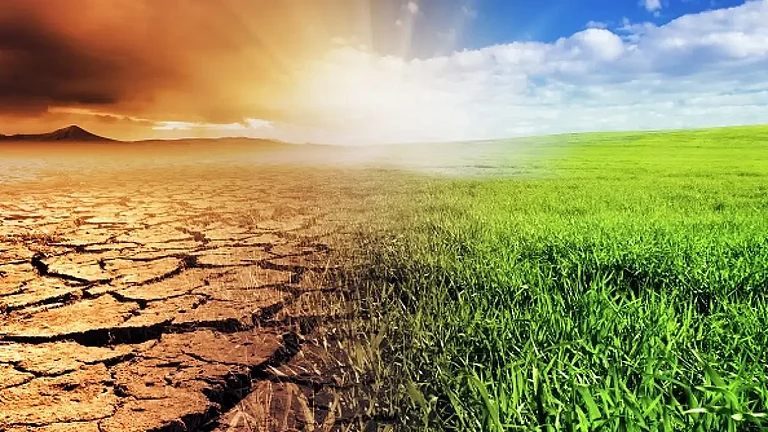Every year in India, summer marks the onset of a fresh season of the wildly popular Indian Premier League. But it also signals a concurrent water crisis in one or more Indian megacities, almost invariably. Amid IPL's 2024 edition, Bengaluru has been dealing with an acute shortage of the elixir, bringing the water supply at the M Chinnaswamy Stadium under the scanner. (More Sports News)
Climate Crisis And Sport: Present Tense, Future Uncertain
Be it the alarmingly poor air quality in north India, the disastrous floods in Pakistan or the adverse heat in Kenya, climate change is bringing grave challenges to the world of sport with each passing day
The National Green Tribunal asked the Karnataka State Cricket Association and other state authorities to submit details of water being used at the stadium during IPL matches, taking suo motu cognizance of reports that mentioned the Chinnaswamy stadium getting treated water supply for the cash-rich league's matches.
Water is not the only natural resource in short supply in India. Clean air is another major bone of contention, especially in the northern parts of the country. The ICC Cricket World Cup 2023 bore witness to the deleterious impact of Delhi's toxic air in the winters, when Sri Lanka played Bangladesh in a group game on November 6.
The Air Quality Index in and around the Arun Jaitley Stadium went past the maximum mark of 500, primary schools were shut down and both teams' training sessions cancelled. The match was eventually played, but only after concerns were raised by Sri Lanka as well as Bangladesh. Television footage from the match depicted a city shrouded in haze, and similar conditions prevailed in supposedly better-off cities like Mumbai too.
Several members from defending champions England used inhalers during their failed campaign, and star batter Joe Root said he had "not played in anything like that before", after the team's loss to South Africa in Mumbai. "I've obviously played in hotter conditions, and probably more humid conditions. But it just felt like you couldn't get your breath. It was like you were eating the air. It was unique."
The burgeoning climate crisis is not unique to India, however. Global warming and allied issues are affecting the world in varied ways, and sport is not immune to it.
An edited extract on Guardian from 'Warming Up: How Climate Change is Changing Sport' by Madeleine Orr cites a worried Athletics Kenya president, Jackson Tuwei. He speaks about how the adverse heat in the nation could disrupt athlete participation there.
“If young athletes are hungry, they won’t run. If the air quality is bad because it is dusty and smoky, they won’t run. If there is no shade because trees have been cut down and there’s no water to drink or shower with they won’t run,” Tuwei is quoted as saying in the report.
Meanwhile, back in the sub-continent, Pakistan is facing other grave challenges. The country suffered devastating floods in the summer of 2022 that killed almost 2,000 people, in addition to causing losses to the tune of trillions of rupees.
In the severely affected region of Sindh exists the Mehran Football Club in Thatta, whose president Ali Athar Nakash Brohi describes in the report the distressing spectre. “Some of our members who live in the villages outside Thatta lost everything. They’re the ones that came here to stay on the grounds.
“It took many months to get our fields back in order and to start sports again. It was really challenging for us because everyone is completely disturbed and everything we do is run by volunteers. Nobody has mental energy after floods,” Brohi is quoted as saying.
The Olympics are without doubt the grandest, most vivid multi-sport event in the world. How will they be impacted by climate change? Listen to what Julie Duffus, senior manager of sustainability at the International Olympic Committee, had to say at the Sport Positive Summit in October 2022.
“I work with 206 countries around the world. And so many of them now are witnessing these impacts … by the time we get to 2030, we’re looking at losing about 20% of our Olympic nations. Literally, gone.”


